The largest squash ever grown was such an epic size it weighed as much as a grand piano! Here’s the lowdown on the world’s record-breaking squash, who grew it, and how you can grow behemoth squashes too.

The world’s heaviest squash broke records in 2021.
©Joe Kuis/Shutterstock.com
Official Largest Squash Ever Grown
According to the Guinness World Records, the largest squash in the world weighed a whopping 2,164 pounds (981.57 kgs). Todd and Donna Skinner grew this epic gourd. Its weight was made official at the Oakland Nursery National Pumpkin Weigh-off in Dublin, Ohio, USA, on October 10, 2021.
The Skinners report spending over 50 hours a week tending to their squashes and pumpkins, and they grew their monstrous green squash from a 1109 Jutras seed. Previous record holder Joe Jutras produced the mother squash.
New England’s Joe Jutras earned the heaviest squash record in 2016 with a mammoth 2,118-pound green squash. This epic grower is the first person to earn titles for largest pumpkin, longest gourd, and heaviest squash, but the Skinner’s humungous effort paid off when they grabbed the heaviest squash title.
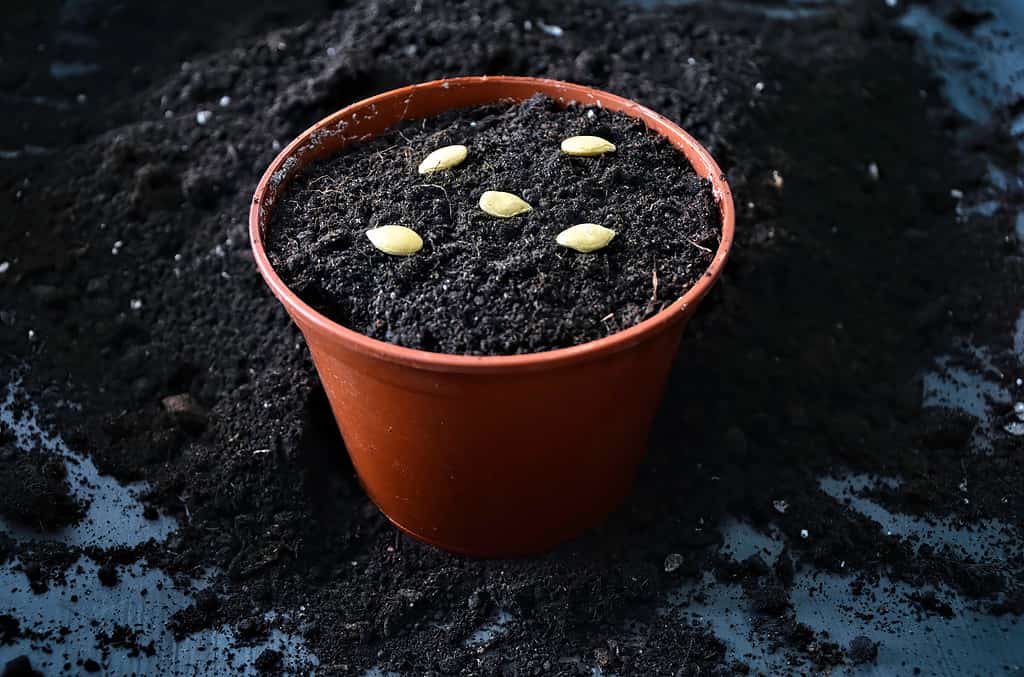
A Jutras squash seed produced the world’s heaviest squash record.
©Jullex51/Shutterstock.com
Is Squash a Fruit or Vegetable?
Most folks would say squash is a vegetable, but because squash grows on vines, develops from a flower, and produces seeds, it’s botanically considered a fruit. Vegetables are technically other plant parts like leaves, roots, or stems.
Where Is Squash Originally From?
The squash we eat (and grow to grand piano weight) has roots in Mesoamerica. The name squash is taken from the Narragansett Native American word askutasquash, which means eaten raw or uncooked.
Squash is native to North America and Argentina; most varieties belong to Mexico. Many botanical experts believe squash originated in Mexico at least 10,000 years ago.
When settlers arrived in the Americas, they quickly found squash suited their farms and the climate. Settlers sent squash to Europe; today, it’s a common food worldwide.

Experts think squash originates from Mexico.
©Frank Lombardi Jr/iStock via Getty Images
More World Record-Breaking Edibles
The world’s heaviest squash weighed as much as a grand piano, but what other world record-breaking fruit tops the scales?
World’s Heaviest Butternut Squash
Michigan’s Derek Ruthruff grew the heaviest butternut squash in the world in 2022. It weighed a remarkable 104.5 pounds (47.4 kgs), the equivalent of a fully grown male rottweiler.
The heavyweight butternut was verified at Dundee’s Pumpkin Palooza by the Great Pumpkin Commonwealth. Ruthruff grew his title holder from a previous record holder’s butternut squash seed. The parent butternut weighed a whopping 55.5 pounds.
World’s Heaviest Tomato
Del and Julie Faust from Minnesota grew the world-breaking heaviest tomato. It weighed the same as a bowling ball at 11.65 pounds! The Great Pumpkin Commonwealth considered this record-breaker on October 8, 2022.
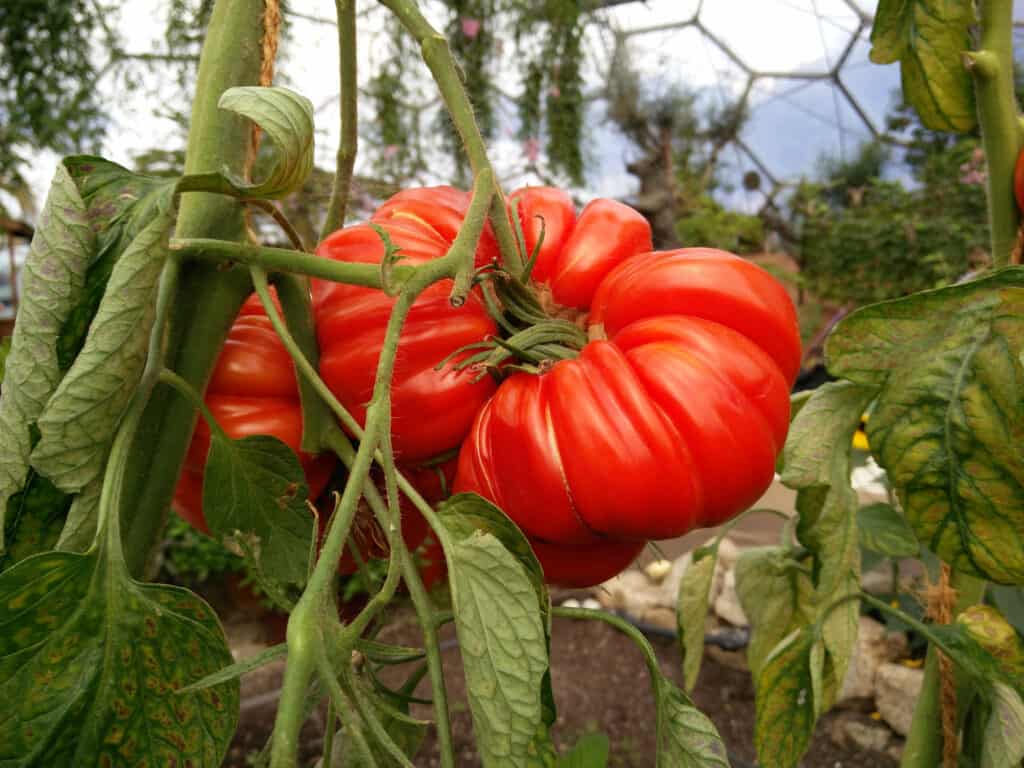
The world’s heaviest tomato weighed 11.65 pounds.
©iStock.com/Sophie Shoults
World’s Heaviest Cucumber
Heading to the U.K. now, we meet David Thomas, who holds the Guinness World Record for the heaviest cucumber. His record-breaker weighed 23 pounds 7 oz on September 26, 2015.
Heaviest Chili Pepper
We’re staying in the U.K. for the world’s heaviest chili pepper, which weighed more than a can of Coke at 460 grams! Paul Davies of Halesowen grew this behemoth in September 2020.
World’s Heaviest Apple
Newton got out of the way. The world’s heaviest apple weighed 4 pounds and 1 oz. Japan’s Chisato Iwasaki grew it in his orchard in October 2005.
World’s Heaviest Pumpkin
Italy’s Stefano Cutrupi holds the current world record for heaviest pumpkin. His staggering pumpkin officially weighed 2,702 pounds and 13.9 oz on September 26, 2021. It measured an epic 11 feet eight inches in width, making it the largest pumpkin ever.
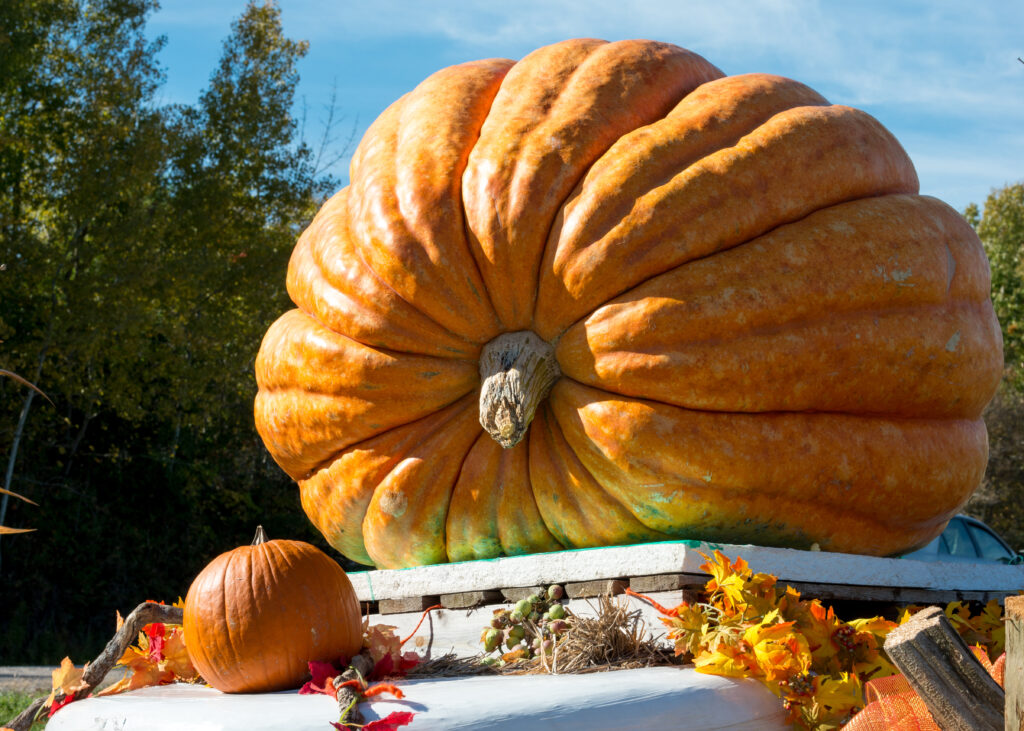
The world’s heaviest pumpkin weighed 2,702 pounds, much more than this 930-pound giant pumpkin!
©iStock.com/Jun Zhang
How to Grow Big Squash
Do you fancy growing an epically sized super squash to rival Skinner’s 2,164-pound mega squash — the heaviest squash in the world?
Here’s how to grow huge squash.
Seed selection is important when a grower wants to produce a large fruit or vegetable. The Skinners used an heirloom 1109 Jutas seed, but they’re difficult to find. Other large cultivars include winter hubbard squash, pink banana jumbo squash, and spaghetti squash.
Germinate Indoors
Tender squash reliably germinates indoors during spring. A late frost or consistently low temperatures put them back in terms of growth, and harsh frost can even kill off young squash plants. If indoor sowing isn’t an option, wait until mid-spring when the soil is warmed up and frost is a distant memory.
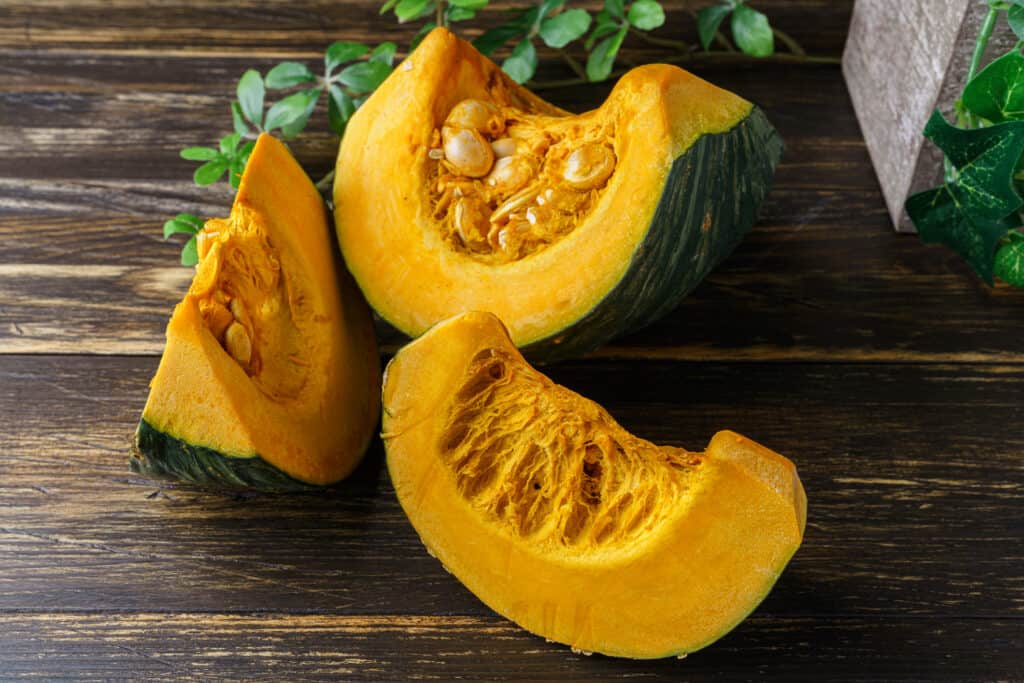
Squash seeds are best germinated on a warm windowsill.
©iStock.com/Wako Megumi
Best Soil for Huge Squash
Consider the size of a squash seed compared to the fruit and then how many fruits a vine might produce. That’s a lot of growth! This means squash plants need rich, well-fed soil that drains but holds onto its nutrients.
Before planting squash, dig the vegetable patch over and choose where your mega squash will thrive best (see sun requirements below). Then, dig a foot-deep hole and fill it with organic matter like well-rotted horse manure. Afterward, scatter general-purpose fertilizer over the whole growing area according to the packet instructions.
If you prefer to grow squash in a container, use good-quality compost.
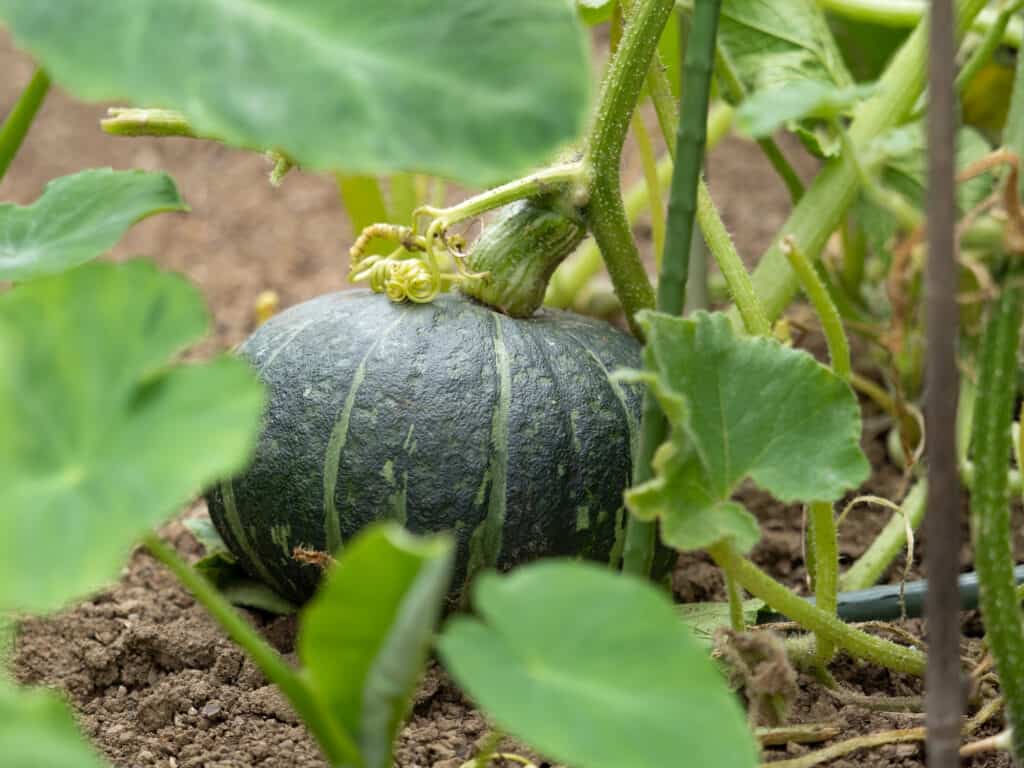
Squash plants need lots of rich fertilized soil, such as well-rotted horse manure.
©iStock.com/y-studio
Lots of Sun
Squashes grow largest in full sun, but they grow in partial shade, too. Maximize your squash’s weight with as much sunshine as you can muster. Six hours a day is the minimum amount for heavy squashes.
Space Squash Out
To maximize size and weight, squashes need as many nutrients and as much sunshine as possible. Part of this is arranging proper spacing. Compact varieties require at least three feet in all directions, but the largest types need even more. It’s five feet apart for trailing squash!
It might look silly when just four small squash plants take up the entire vegetable patch in spring, but by summer’s end, there’ll be no visible soil. In the meantime, grow rapidly ripening veggies in the bare space, such as radish or lettuce.

Squash plants grow to large sizes. Trailing squash need five feet to spread.
©Juli V/Shutterstock.com
Thorough Mulching
After planting, cover the soil with a two-to-three-inch layer of rich, organic mulch like rotted horse manure or compost.
Mulch traps moisture, keeps roots cool, suppresses weeds, and deters slugs, and provides extra nutrients for record-breaking squash. However, don’t put mulch on the squash seedling’s stem because this can cause rot.
How Much Water Do Squashes Need?
Thirsty squashes need lots of water, so aim to keep their soil damp at all times. An excellent way to achieve well-watered squash is to sink a six-inch pot in the soil beside it and then water it. This ensures water goes directly to its roots.
Dry squashes often develop powdery mildew on their foliage. It won’t stop flowers and fruits but damages the vine’s health, so you might not get overly large squash from it.
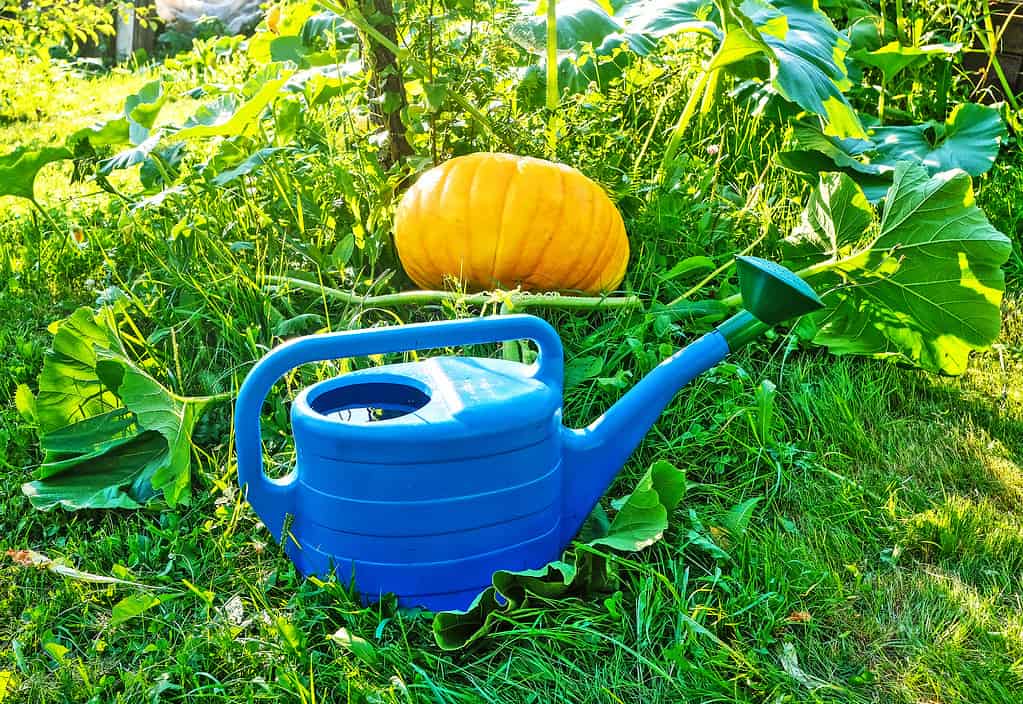
Squash are thirsty plants, and they need water every day.
©ElenaG177/Shutterstock.com
Fertilizer for Large Squash
When flowers appear, feed squash with good-quality potassium-rich liquid feed once a week and continue to fertilize it when young squashes appear. Tomato feed or seaweed fertilizer is good for squashes.
Supporting Squash
Trailing squash on the ground thrives, but train vines over cages or sturdy frameworks if space is at a premium.
Supports keep squash off the wet ground and hoists them above the snail line. It can also help with sun exposure and air circulation. Alternatively, place each fruit on a tile, paving stone, or piece of wood to prevent rot.
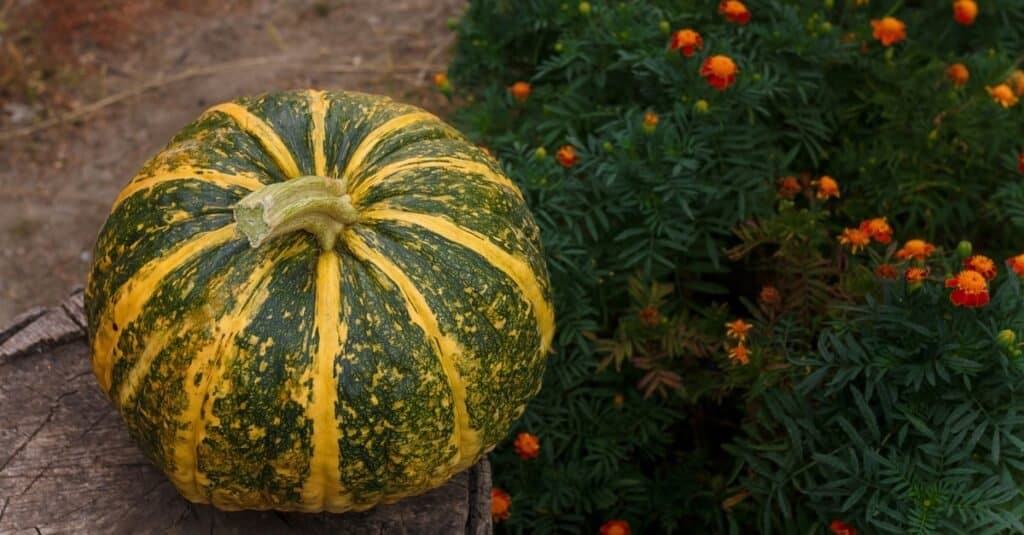
Place growing squashes on tiles, wood, or paving slabs to prevent rot.
©Elena Seiryk/Shutterstock.com
Sacrifice for a Heavyweight Squash!
Growing the heaviest squash requires sacrificing other squashes. Remove all but one well-formed healthy squash from the vine and trim off growth to keep the plant within a few feet of the champion fruit. This ensures all the available nutrients, sunshine, and water make it to the potential record breaker.
The Skinners spent 50 hours a week tending to their prize-winning heaviest squash – that’s quite a commitment! If you don’t have quite the same amount of time to invest, you can still enjoy extra large squash on the dinner table.
The photo featured at the top of this post is © Jun Zhang/iStock via Getty Images
Thank you for reading! Have some feedback for us? Contact the AZ Animals editorial team.







